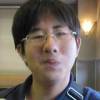Yuta Makita
Biography
I am a freshman Mechanical Engineer ('15) studying at the Cooper Union for the Advancement of Science and Art. I am interested in research based projects and will hope to contribute to the iGEM project. Please feel free to browse through this webpage to view my works and accomplishments through my first year as an engineering student.
Principles of Design
Sketches
The following links direct to sample idea sketches drawn for given problems.
Below is the link to all of my rough sketches/ideas for the upcoming iGEM project. Please note that these are preliminary ideas that need refinement.
Ideas for the iGEM project
Below is the link to a rough sketch/design of a proposed gym.
Ideas for a Gym
Programs
The links below will direct to some sample work on computer design programs.
Rhino
Below is the link to some rhino models of a duck and his racecar.
Duck Modeled in Rhino
SolidWorks
Below is the link to a SolidWorks model of a side to a camero and a race car.
SolidWorks Models
iGEM Competition Project
Introduction
iGEM is a shorthand notation for “International Genetically Engineered Machine”, an intercollegiate competition focused on research based engineering with bacteria.
Abstract
The iGEM competition project involved two main components. The first was to re-verify and complete the work conducted by the previous year's Columbia-Cooper iGEM project. The other was to design, develop and prototype our own project that will be relevant for upcoming iGEM competition teams out our institution and for future research at the biomedical lab. The 2011 Columbia-Cooper iGEM team aimed to develop quantum dots (CdS) -an example are semiconductors used in LED lighting- within E. Coli bacteria. Traditionally the production of semiconductors require extensive amounts of heat and energy, which in return causes major environmental problems. A possible solution is to produce quantum dots at room temperature using bacteria, an alternate microscopic factory. Last year's iGEM competition team developed a protocol based from a journal article (Mi et. al.) to transform E. Coli plasmid so the bacteria would be able to recombine CdCl2 and Na2S to produce CdS. Our goal of this semester, with regards to completing last year's project, was to re-evaluate and re-confirm the production of CdS, and with time permitting, develop a more precise protocol to transform the bacterial plasmid so the whole procedure can be considered for mass production. The second goal of the semester was to develop an individual project that builds off of last year's project or a relevance to the iGEM competition. The conclusion was to develop a cheaper functional model of a vertical gel electrophoresis, also known as the SDS page, that is used to separate larger molecules such as protein. There are current comercial models that are relatively expensive out for sell; however, our goal was to develop a simpler and cheaper model that can be built at each individual laboratories. The designing and prototyping of the SDS page combined the elements of iGEM and design engineering together.
Please use the below link to the photographs from the project to supplement the description.
Photographs of Works
Photographs of Lab Work
Back to iGEM
